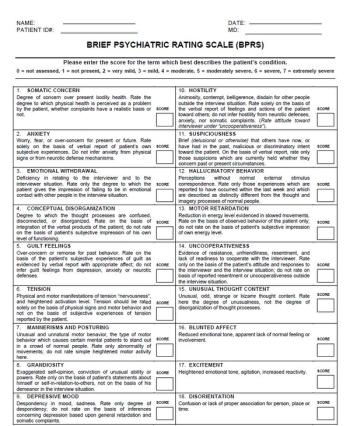
The Brief Psychiatric Rating Scale (BPRS) is a tool clinicians or researchers use to measure psychiatric symptoms such as anxiety, depression, and psychoses.

The Brief Psychiatric Rating Scale (BPRS) is a tool clinicians or researchers use to measure psychiatric symptoms such as anxiety, depression, and psychoses.

This video will help clinicians detect tardive dyskinesia and movement disorders in patients taking antipsychotic drugs.

A program guide for the Abnormal Involuntary Movement Scale video.

The MDQ, developed by Dr Robert M.A. Hirschfeld and colleagues, is a screening instrument for bipolar disorder. It includes 13 yes/no questions about bipolar symptoms and two additional questions about symptom co-occurrence and impaired functioning.






This smartphone-friendly version of the HAM-D (Hamilton Depression Rating Scale) measures levels of depression and probes the severity of symptoms, such as mood, guilt, suicidal thoughts, sleep, and anxiety.

This iPhone and Android-friendly Bipolar Spectrum Diagnostic Scale (BSDS) is found most helpful in detecting not only severe cases of bipolar disorder but also patients who fall into the “softer” end of the bipolar spectrum.

This mobile-friendly Vanderbilt ADHD Rating Scale follows closely the criteria set forth in DSM-IV and has been customized to make smartphone observations in the office and treatment environments.

Developed by M.Hamilton, this widely-used interview scale measures the severity of a patient's anxiety, based on 14 parameters, including anxious mood, tension, fears, insomnia, somatic complaints and behavior at the interview.